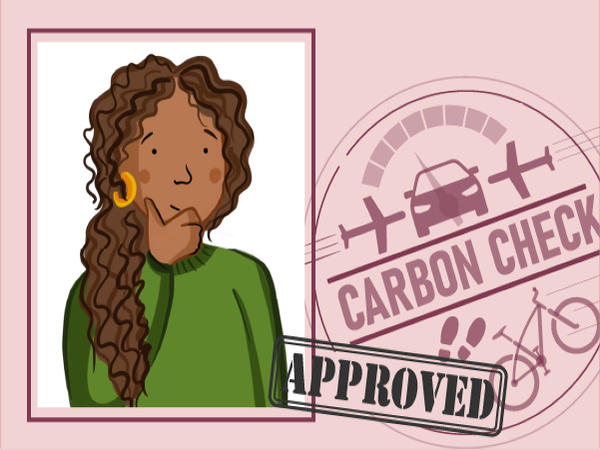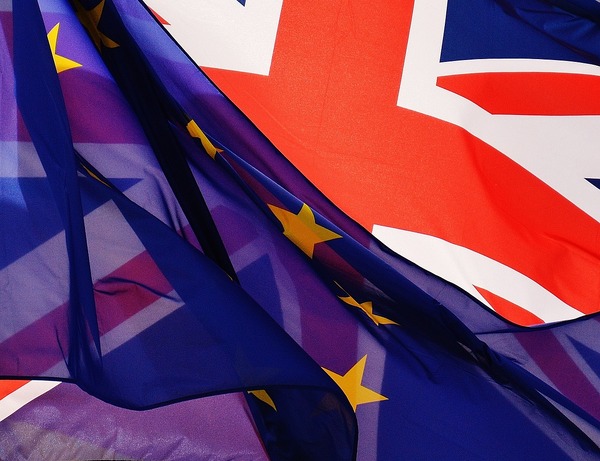You are viewing 1 of your 3 free articles for this month.
Get the knowledge: How carbon impacts climate change
Carbon is central to the climate crisis, but what is it? And what role is it playing in our warming world?

Carbon is one of the most prolific words in the climate conversation. As the key driver of climate change, carbon dioxide is the greenhouse gas (GHG) central to the focus of governments, businesses and individuals looking to reduce their impact on the planet.
Globally, we need to transition to a much lower carbon economy if we’re to ensure a sustainable future.
What is carbon and what role does it play in the climate crisis?
Carbon dioxide (CO2) is a heat-trapping GHG that is released through natural processes such as respiration and volcanic eruptions, but predominantly through human activities which rely on the burning of fossil fuels, such as manufacturing and transportation.
CO2 is necessary to sustain life on Earth. When energy from the sun reaches the Earth’s atmosphere, some of it is reflected back into space and some of it is absorbed by the land and oceans. This creates heat which then partly radiates out towards space, and is partly trapped by GHGs in the atmosphere, keeping the planet warm enough to support our existence. This is called the greenhouse effect.
However, an increasing volume of human-produced GHGs means that the heat that would otherwise radiate back into space is becoming trapped in the atmosphere, which is causing the Earth’s temperature to rise (global warming).

These rising temperatures result in more extreme weather events such as drought and storms, as well as melting polar ice caps which will lead to serious sea level rises. These impacts stand to have a devastating impact on the planet, hence the term ‘climate crisis’.
CO2 isn’t the only GHG contributing to climate change – others include methane (CH4), nitrous oxide (N2O), chlorofluorocarbons (CFCs and HFCs) and ozone (O3) (see chart) – but it is carbon that presents the biggest risk to the planet because of the sheer volume generated by human activities.
Global commitments and the ‘Race to Net Zero’

To avoid the worst impacts of climate change, the Intergovernmental Panel on Climate Change (IPCC) states that we need to keep the global temperature rise below 1.5C. The 2015 Paris Agreement is an international treaty on climate change signed by 197 countries committed to reducing their national carbon emissions in line with this target.
Keeping below 1.5C requires bold action from all countries, which is why many are now working towards ‘net zero’. Achieving net zero means not adding to the amount of GHGs in the atmosphere through a mixture of emissions reduction, energy efficiency and sequestration (a method of reducing the amount of carbon dioxide in the atmosphere).
Walk to work instead of driving, or use energy from renewable sources instead of fossil fuels
The IPCC warns that we need to achieve net zero by 2050 at the very latest if we’re to meet the goals of the Paris Agreement, and crucially, to avoid the worst impacts of climate change. If we surpass the 1.5C threshold we become dangerously vulnerable to more extreme weather events, as well as the far-reaching consequences on wider factors such as food supplies and water availability.
Most countries have set a 2050 target for net zero, while some nations are working towards an earlier date. For example, Maldives is aiming for net zero by 2030, Finland by 2035, Iceland by 2040 and Sweden by 2045. Others, however, have not committed to achieving net zero until later, such as China (2060), Bahrain (2060) and India (2070). Some countries, meanwhile, claim they’ve already achieved net zero emissions, such as Bhutan, Gabon and Madagascar. The Energy & Climate Intelligence Unit keeps track of every country’s net zero pledge.
In order to support the transition to a zero-carbon economy, the United Nations Framework Convention on Climate Change (UNFCCC) has launched the ‘Race to Zero’ campaign to rally leadership and support from businesses, cities, regions, investors for a healthy, resilient, zero carbon recovery that prevents future threats, creates decent jobs, and unlocks inclusive, sustainable growth.
How can we reduce carbon in the atmosphere?
In order to reduce something, we have to first know how much that something is, which is why carbon measurement is so important. The amount of carbon produced by a country, an organisation or an individual is called a carbon footprint (you can learn how to measure your individual carbon footprint below). Once a carbon footprint has been identified, there are three main ways of reducing it.
Carbon reduction
The most effective way of reducing carbon in the atmosphere is to simply stop emitting so much of it. Carbon reduction activities involve swapping to processes or behaviour that emit less carbon than their traditional counterparts. For example, walking instead of driving, using energy from renewable sources instead of fossil fuels, wearing a jumper instead of turning up the thermostat, and so on.
Energy efficiency
Right now, it’s not possible to sustain global society with no carbon emissions at all – people need things like heating, food and transportation. So the next step is ensuring that any carbon emissions created come as the result of the most efficient processes possible. Efficiency simply means doing more with less.
For example, using a newer, efficient appliance that consumes less energy than an older, more inefficient one. Both do the same job, but one is responsible for fewer emissions than the other. Businesses in the manufacturing industry are particularly interested in energy efficiency, as by tweaking their processes and investing in more efficient equipment they can make a big difference to their carbon footprint and energy bills.
Carbon offsetting
Carbon offsetting is the process by which companies and individuals can ‘balance out’ their own carbon footprint by investing in projects and initiatives around the world that help to remove CO2 from the atmosphere. Tree-planting projects are popular, as are initiatives that reduce the impact of carbon-heavy cookstoves commonly used in developing countries. However, there is some controversy around carbon offsetting.
What’s the problem with carbon offsetting?
Carbon offsetting is a great idea in theory. However, many companies have come to view the practice as something of an environmental panacea, and are taking no meaningful steps to reduce their carbon emissions or invest in energy efficiency because they feel they can simply ‘buy’ their way out of the problem (For a deeper dive see What’s the problem with carbon offsetting).
Offsetting certainly has a role to play, but should only be used once other measures – reduction and efficiency – have been exhausted, because the atmosphere is still subject to the emissions the offsets are supposed to account for.
The average person in Rwanda has an annual carbon footprint of 0.09 tonnes. In the UK, the average is 8.3 tonnes
Additionally, not all offsetting schemes are actually good for the environment or society. For example, some projects rely on tree plantations which depend upon monocultures that don’t provide much-needed biodiversity, while others take away the land of indigenous communities, or force workers into poor conditions. If a carbon offsetting scheme is used, it should be accredited by organisations such as Gold Standard or Verra.
Can technology be used to remove carbon from the atmosphere?
Technology is playing an increasingly important role in the carbon challenge, with three key innovations leading the charge.
Carbon capture and storage (CCS)
CCS involves capturing CO2 emissions from industrial processes such as steel production or the burning of fossil fuels, then compressing and transporting it to a storage site to be injected into rock formations deep underground. According to the Global CCS Institute, there are 196 commercial CCS facilities in the project pipeline, including 30 projects in operation, 11 under construction, and 153 in development. With 61 new facilities added to the project pipeline in 2022, the CO2 capture capacity of all CCS facilities under development has grown to 244 million tonnes per annum.
Carbon capture, utilisation and storage (CCUS)
CCUS works in the same way as CCS, but instead of storing carbon, it’s reused in industrial processes by turning it into plastics, concrete or biofuel. According to the most recent figures from the IEA, as of 2020 there were 21 operational CCUS facilities around the world, with a further 44 in various stages of development.
Direct air capture (DAC)
DAC technology extracts CO2 directly from the atmosphere, where it can either be stored underground or used again in industry. This is a promising technology, but at this stage it’s still very expensive and requires a lot of energy to process, which reduces its environmental benefit. DAC company Climeworks launched the world’s first large-scale CO2 removal plant in Iceland in 2021, with a capture capacity of 4,000 tonnes of CO2 a year. It’s currently working on a second facility in Iceland, with the capacity to suck 36,000 tonnes of CO2 per year from the air.
What responsibility does business and industry have to reduce their carbon footprint?
Right now, businesses around the world do not have any legal obligation to reduce their carbon footprint. However, it’s clear that nations will be unable to hit their net zero targets without the help of industry, which is why governments are increasingly incentivising low-carbon business practices. In any case, reducing emissions makes good business sense as it leads to lower energy bills and a competitive advantage, as more and more consumers say they’re choosing products and services with a lower environmental impact.
Businesses that are choosing to address their carbon footprint can do so in a number of ways. Global frameworks such as GRI, SASB and TCFD enable companies to measure, monitor and report on their sustainability activities, while the Greenhouse Gas Protocol provides a platform for businesses to understand the carbon impact of their products and services through life cycle analysis (LCA). An LCA looks at the emissions associated with every aspect of a product, from the materials used to make it through to how it is used by the consumer, and then how it’s eventually disposed of.
While reporting on emissions isn’t yet mandatory, it’s likely to become an obligation for most businesses in the coming years. In the EU, the Corporate Sustainability Reporting Directive (CSRD) entered into force in January 2023. This new directive modernises and strengthens the rules concerning the social and environmental information that companies have to report. A broader set of large companies, as well as listed SMEs, will now be required to report on sustainability. The first companies will have to apply the new rules for the first time in the 2024 financial year, for reports published in 2025.
To help get a complete picture of their carbon emissions, many companies are committing to Science-Based Targets (SBTs). The Science Based Targets initiative is a collaboration between CDP, the United Nations Global Compact, the World Resources Institute and the World Wide Fund for Nature. It provides a clearly-defined pathway for companies to reduce their GHG emissions in line with the Paris Agreement.
The targets cover three scopes of emissions:
- Scope 1 emissions cover all the emissions a company is directly responsible for, such as those associated with running in-house boilers or car fleets, or leaks of greenhouse gases from air conditioning units.
- Scope 2 covers emissions that a business is indirectly responsible for, such as those resulting from services it pays for, for example energy it pays for to heat or cool its offices.
- Scope 3 covers indirect emissions associated with supply chains. For example, the Scope 1 and 2 emissions of its suppliers that relate to products the company buys.
Additionally, there are a large number of voluntary initiatives and pledges aimed at businesses that want to reduce their carbon footprint, such as The Climate Pledge and Climate Neutral Now.
What are Scope 4 emissions?
Tackling Scope 1,2 and 3 emissions is a central part of most organisations’ carbon reduction efforts, but Scope 4 emissions – while often overlooked – are quickly becoming a bigger consideration.
According to the World Resources Institute (WRI), Scope 4 emissions – also known as ‘avoided emissions’ –are those that “occur outside a product’s life cycle or value chain but as a result of the use of the product”. Unlike Scope 1, 2 or 3 emissions, which are tangible and have already been created, Scope 4 emissions are those that have been prevented thanks to the product in question being used. These include things such as energy efficient appliances, low-temperature detergents and fuel-saving tyres, for example.
When it comes to carbon accounting and sustainability strategies, Scope 4 emissions can act as an indicator for how well a company is performing, as well as attract climate-conscious customers to the business and appease stakeholders that increasingly demand strong sustainability credentials.
Calculating Scope 4 emissions is complex, however, because you essentially have to measure something that doesn’t actually exist. In 2019, the WRI introduced a framework to cover the measurement and disclosure of GHG emissions that stem from a product or service, including avoided emissions. More recently, a group of 11 investment companies, including Mirova and Robeco, have started work on a global database of forward-looking metrics and ‘avoidance factors’ to help organisations get better sight of their Scope 4 impact.
Despite the complexities around measuring these avoided emissions, companies are already taking action to integrate them into their impact approach. America’s Pacific Gas & Electric Company, for example, have issued a climate strategy report that refers to Scope 4, while Telefonica of Spain and Renew Energy Global of India are among groups to have disclosed specific figures for avoided emissions.
What is my carbon footprint?
Everyone’s individual carbon footprint will be different, and will vary wildly across the globe. According to data from Statista, the average person in Somalia has a territorial per capital carbon footprint of 0.04 tonnes every year. In the US, however, the annual average is a significantly higher 14.86 tonnes.
You can find yours using a carbon footprint calculator, which will ask you for information about your day-to-day life, such as how much you drive, the size of your house, what kind of diet you have, and so on, and from this calculate an estimate of how many emissions you’re personally responsible for.
WWF has a really straightforward, easy-to-use questionnaire that also offers up interesting climate-related facts and titbits as you progress. Conservation.org lets you discover the carbon footprint of individuals, families, trips and even events.
These calculators are helpful to anyone looking to reduce their environmental impact as they often highlight areas where simple swaps and behavioural changes can make the biggest difference.
Carbon footprint calculators
- Carbon Footprint provides one of the most popular online calculators. It is independently audited for content and accuracy.
- Here’s how to measure your environmental footprint. The WWF environmental footprint calculator was developed with the University of York. You can make small changes to your lifestyle that will make a difference in the long run.
Check it Out
For more information on these issues:
- The 2015 Paris Agreement is an international treaty on climate change signed by 197 countries committed to reducing their national carbon emissions
- The IPCC provides policymakers with regular scientific assessments on climate change
- The Energy & Climate Intelligence Unit keeps track of each country’s net zero pledge
- The ‘Race to Zero’ campaign rallies leadership and support from businesses, cities, regions and investors
- The Gold Standard sets the standard for climate and development interventions to quantify, certify and maximise their impact
- The Global CCS Institute is an international think tank whose mission is to accelerate the deployment of carbon capture and storage (CCS)
- The IEA (International Energy Agency) works with countries around the world to shape energy policies for a secure and sustainable future
- Climeworks, a Swiss company specializing in carbon dioxide air capture technology
- The Greenhouse Gas Protocol supplies the world's most widely used greenhouse gas accounting standards
- Science-Based Targets (SBTs) defines and promotes best practice in science-based target setting
- The Climate Pledge is a cross-sector community of companies, organisations, individuals, and partners
- Climate Neutral Now Initiative was launched by the United Nations Framework Convention on Climate Change (UNFCCC) secretariat to increase climate action
- Statista's data on average carbon footprints per person around the world
- The World Resource's Institute's 2019 Avoided Emissions Framework
- More on the investor-lead creation of a database for avoided emissions
Related
Activate employees
Find out how OckiPro membership engages employees to deliver sustainability impact.
Get Involved
There are many ways to get involved with Ocki and its community. To find out more, click the button below




